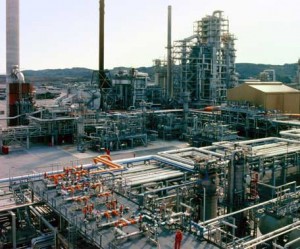Petrochemicals are a category of organic chemicals derived principally from two feedstocks; those derived from natural gas processing plants in the form of NGL; and those derived from crude oil refinery streams such as naphtha and light gas oil. Ethylene is the primary petrochemical constituting the chemical building blocks for a wide variety of industrial materials and applications. A recent detailed ethylene report from FC Business Intelligence Ltd, “U.S. Ethylene Export Report,” confirmed the growing importance of ethane and NGL based feedstock for ethylene production, relative to refinery based feedstocks, such as naphtha.
The report noted that the most commonly used production process for ethylene in the U.S. is now ethane cracking, whereas in the Middle East and Far East naphtha cracking is most commonly used. The production of ethylene as an intermediate in refineries occurs worldwide and the quantity produced in this way is dependent on the refinery’s product focus, but pales in comparison to ethylene production from world scale steam crackers. The boiler plate capacity of these world scale ethylene plants are typically in the 1 million tpy range, such as the recently announced 1.8 million mtpy ethylene plant to be built near Corpus Christi, Texas by the Exxon & Saudi Basic Industries (SABIC) partnership. The $10 billion facility will be the world’s largest ethylene plant.
The FCC operation transforms large hydrocarbon molecules into smaller molecules that can be converted into naphtha. This additional naphtha can then be converted into additional gasoline, diesel fuel, etc. or else sold as feedstock to a downstream steam cracker.
Unlike ethane, naphtha-based processes produce a variety of yield products whose sale can help offset the cost of ethylene, the primary product. Moreover, most naphtha crackers are situated next to refineries, and so can receive and process this low cost waste (i.e., naphtha) generated by refinery operations. The research conducted for the report noted that in Asia, not all refineries have naphtha export possibilities. Ethane crackers are less complex than naphtha crackers and involve a smaller capital expenditure. They also produce much more ethylene per percentage of weight than naphtha. China has restrictions on new crackers. For instance, a new cracker cannot take another feedstock if there is available feedstock from a nearby refinery.








Leave a Reply
You must be logged in to post a comment.